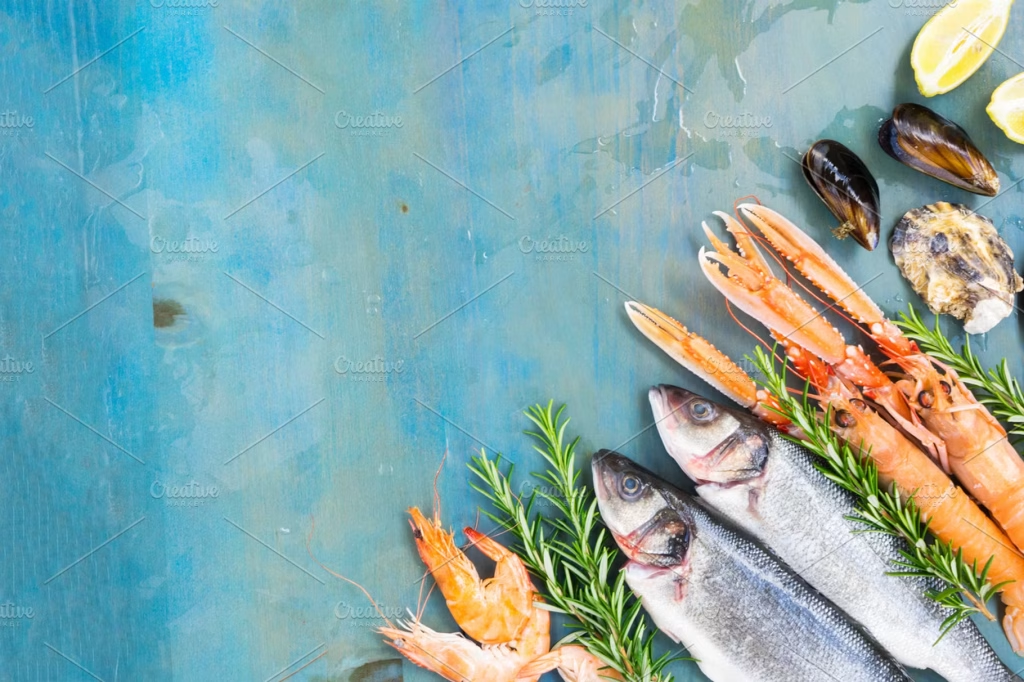10 Best Practices to Preserve Quality

Seafood is a sensitive and short-life food commodity that needs proper handling and storage to ensure its quality, freshness, and safety. Effective handling and storage measures are needed to avoid spoilage, retain flavor, and preserve food safety. The following are 10 best practices to help keep seafood quality intact
CLICK HERE TO KNOW ABOUT BENEFITS OF FROZEN SEAFOOD/FISHES
Temperature Control: Ensuring Optimal Conditions
Keeping the right temperature is most important in maintaining the quality of seafood. Seafood is very perishable and prone to bacterial growth, particularly in temperatures higher than 40°F (4°C). Thus, it’s necessary to keep seafood in refrigerators at 32°F to 38°F (0°C to 3.3°C) or freezers at 0°F (-18°C) or lower.
Hygiene and Cleanliness: Preventing Contamination
Good hygiene and sanitation are important considerations in seafood handling. Washing the hands, utensils, and surfaces with warm, soapy water before and after handling seafood is essential in order to minimize cross-contamination. Separate boards should also be used for cutting raw seafood so as not to contaminate cooked foods.
Quick Chilling: Preserving Freshness
As soon as the seafood is caught, it must be cooled quickly to preserve its freshness. Rapid cooling inhibits bacterial development and enzymatic activity, ensuring the quality of the seafood. In the best situation, seafood should be set on a bed of ice in a shallow container and put into the refrigerator or cooler as soon as possible.
Prevent Cross-Contamination: Separation is Essential
Cross-contamination can take place if harmful bacteria present in one type of food get transferred to the other. Therefore, seafood has to be separately stored from all other foods, particularly ready-to-eat ones. Raw seafood must be placed on the lowest shelf of the refrigerator so drips don’t fall on the other foods.
Proper Packaging: Sealing in Freshness
Correct packaging enables the extension of the shelf life of seafood because it prevents contact with air and moisture. Sealed bags or containers that exclude air are suitable for keeping seafood in the fridge or freezer. Wrapping seafood tightly in plastic wrap before chilling is also beneficial in preserving quality.
Use of Ice: Retaining Cold Temperatures
Ice is of importance in retaining seafood quality upon transport and storage. Placing seafood in an environment surrounded by ice or gel packs ensures the cold temperatures prevent the growth of bacteria and spoilage. For the transport of seafood, there should be use of insulated coolers to help ensure that seafood remains cold.
Storage in Refrigerator or Freezer: Shelf Life Extension
Proper storage will help to increase the shelf life of seafood. Seafood must be placed in the refrigerator in the lowest area, usually the back of the bottom shelf. Seafood can be frozen for longer storage, but it must be properly packaged to avoid freezer burn.
Regular Inspection: Monitoring for Spoilage
Routine inspection of seafood is essential to detect signs of spoilage. Spoiled seafood can have off-odors, slimy texture, or discoloration. If any of these signs are detected, the seafood must be discarded immediately to avoid foodborne illness.
Labeling: Organizing and Identifying
Labeling seafood with purchase date or catch date ensures proper rotation and prevents the use of expired seafood. Proper labeling also assists in keeping the refrigerator or freezer organized, making it simple to determine the various kinds of seafood.
The FIFO (first in, first out) system should be applied when keeping seafood to have older products consumed prior to newer products. This procedure helps reduce wastage of food and makes sure that seafood is eaten at its best freshness. This Practice applies for locally sourced products.
The FEFO (First Expired, First Out) approach
The FEFO approach is an essential seafood industry practice of inventory control. It means that the most aged products, the ones near their expiration, are sold or consumed first. This practice is typically done on imported products
ConclusionQuality and food safety can be maintained by proper handling and storage of seafood. Through these 10 best practices described above, you can have a good quality fresh, delicious seafood and reduce the chance of foodborne illness.
mail-sakkysqatar@gmail.com
Muhd Nazal
As a **high-performing business entrepreneur**, he is a visionary leader with an unparalleled ability to identify opportunities and transform them into successful ventures. Your strategic mindset, combined with a relentless drive for excellence, sets you apart in the competitive business landscape. You inspire teams with your passion, resilience, and innovative thinking, consistently delivering results that exceed expectations. Your commitment to growth, sustainability, and creating value for your customers and community defines your legacy as a true trailblazer in the world of entrepreneurship..

